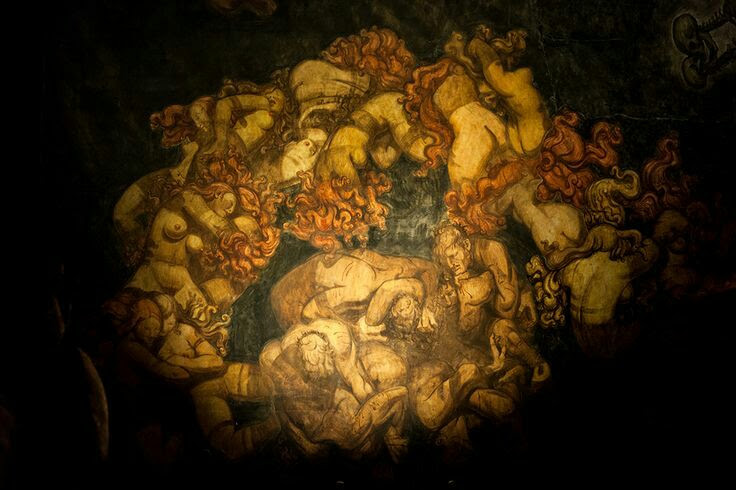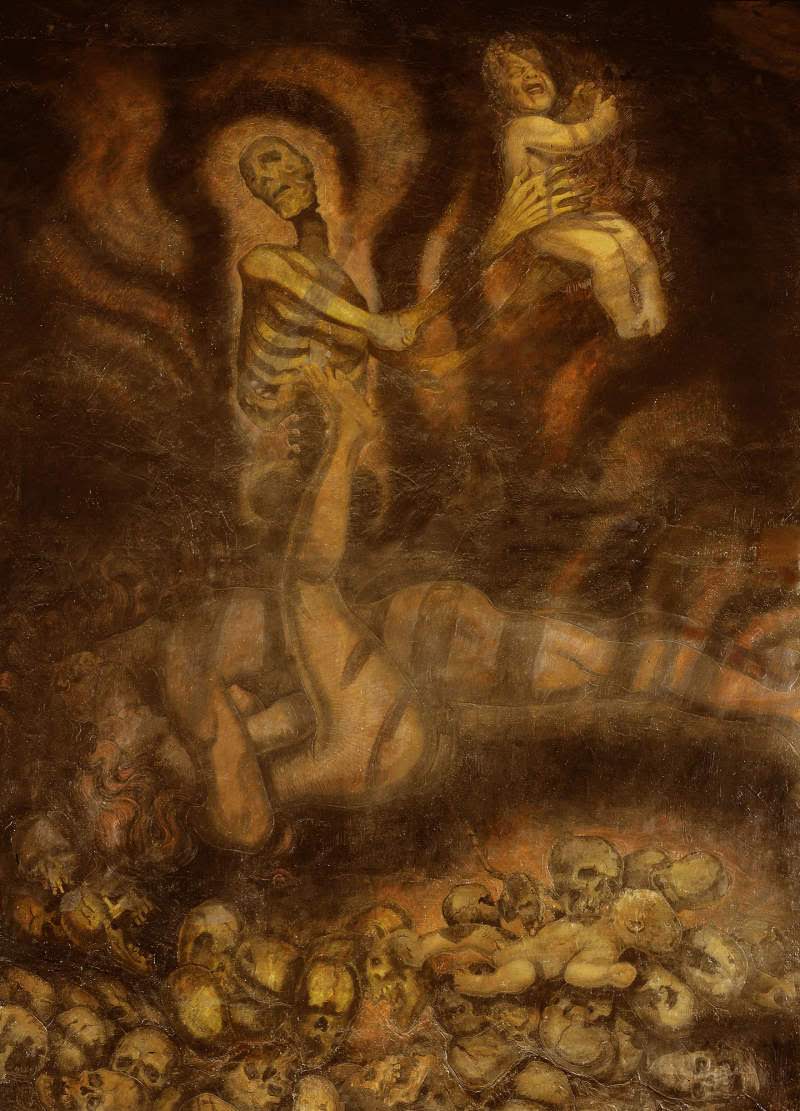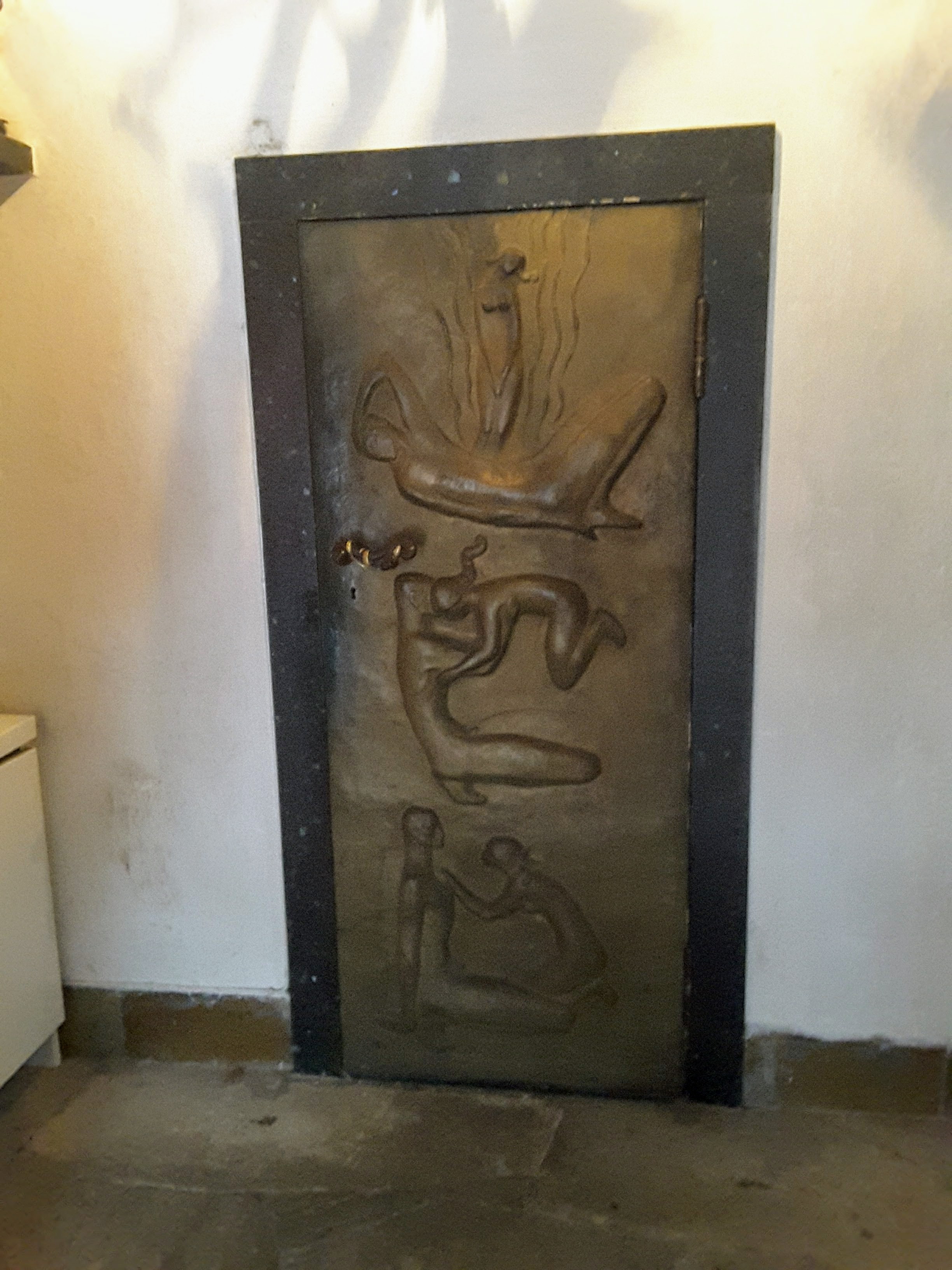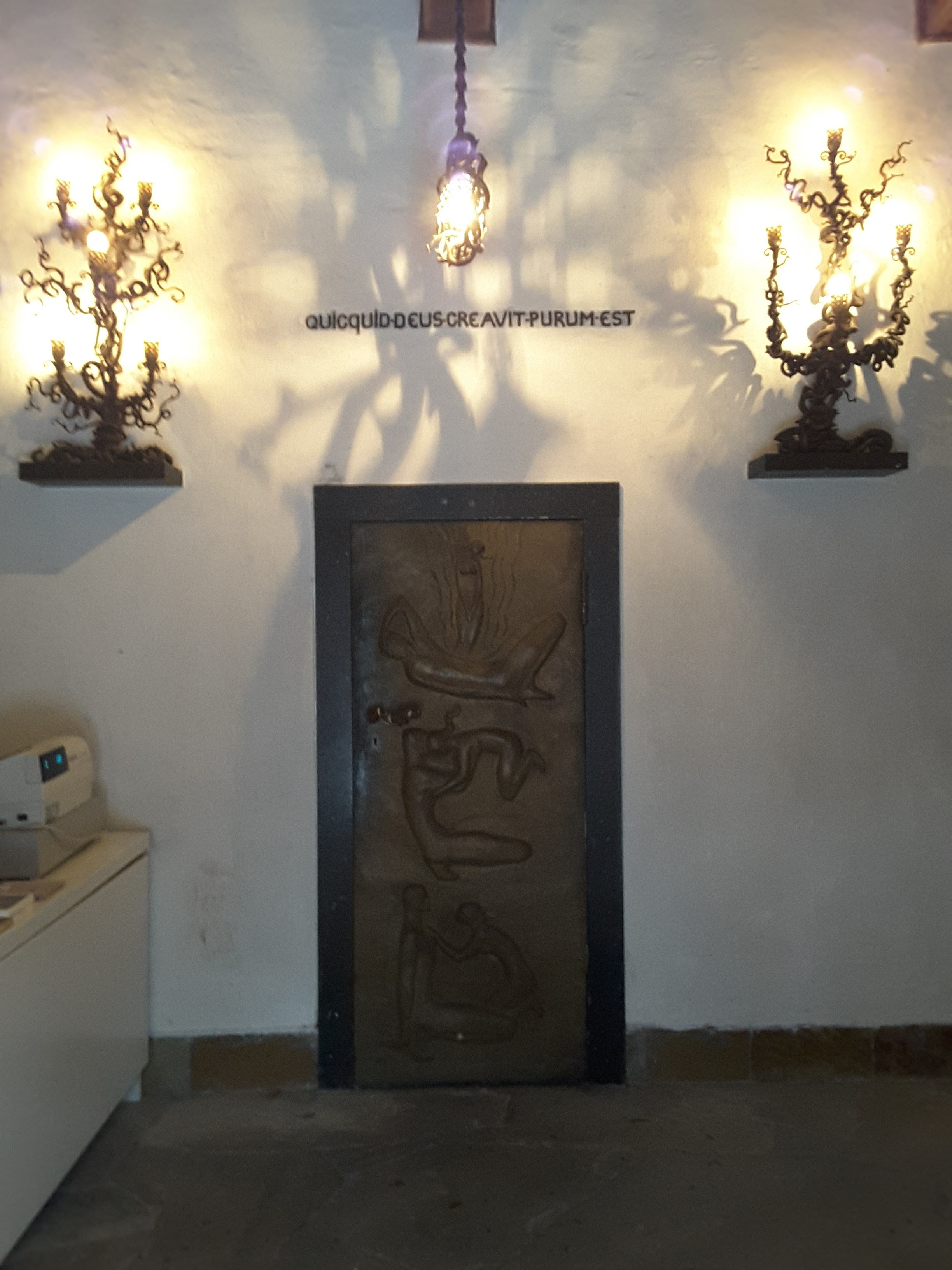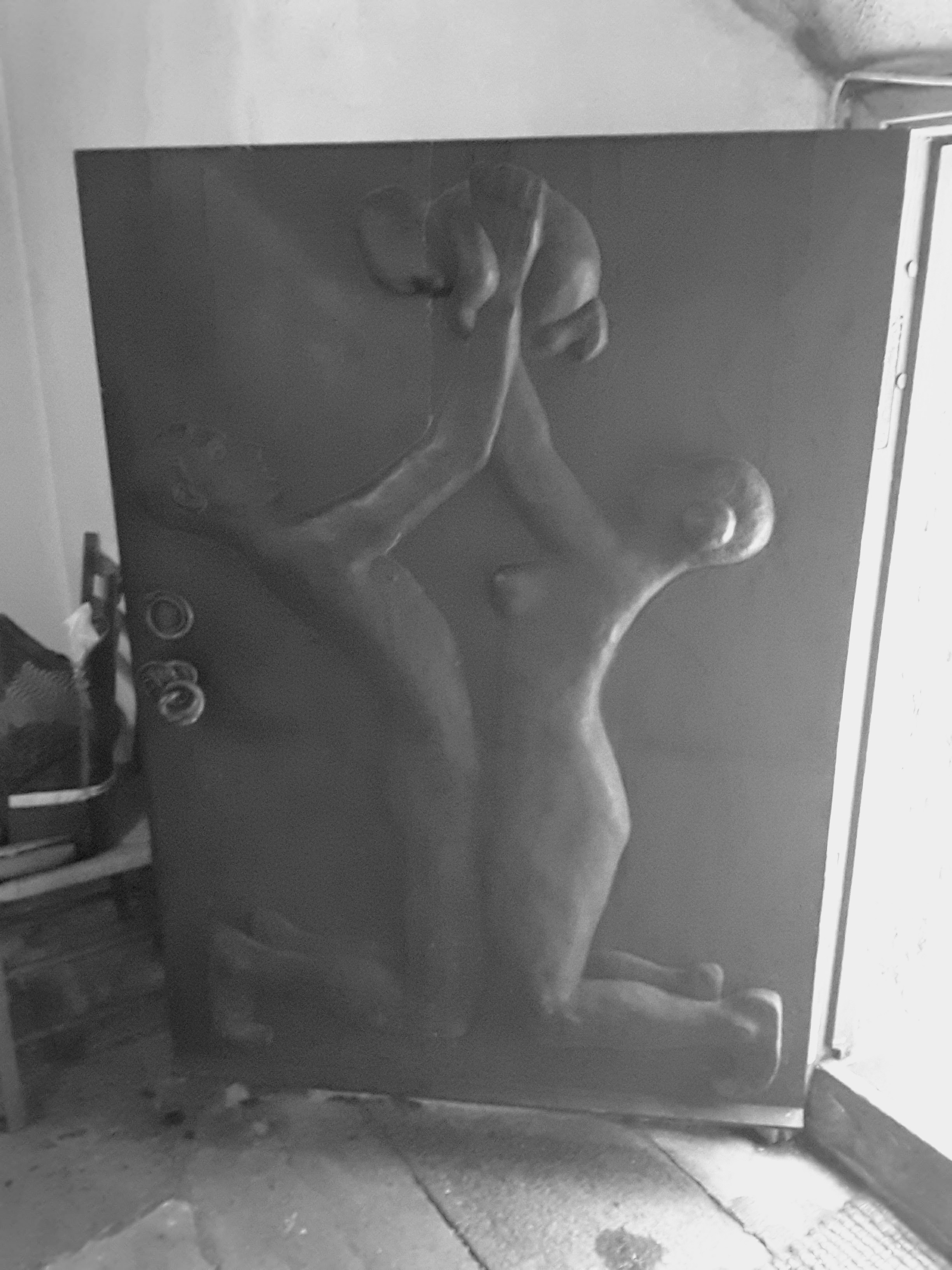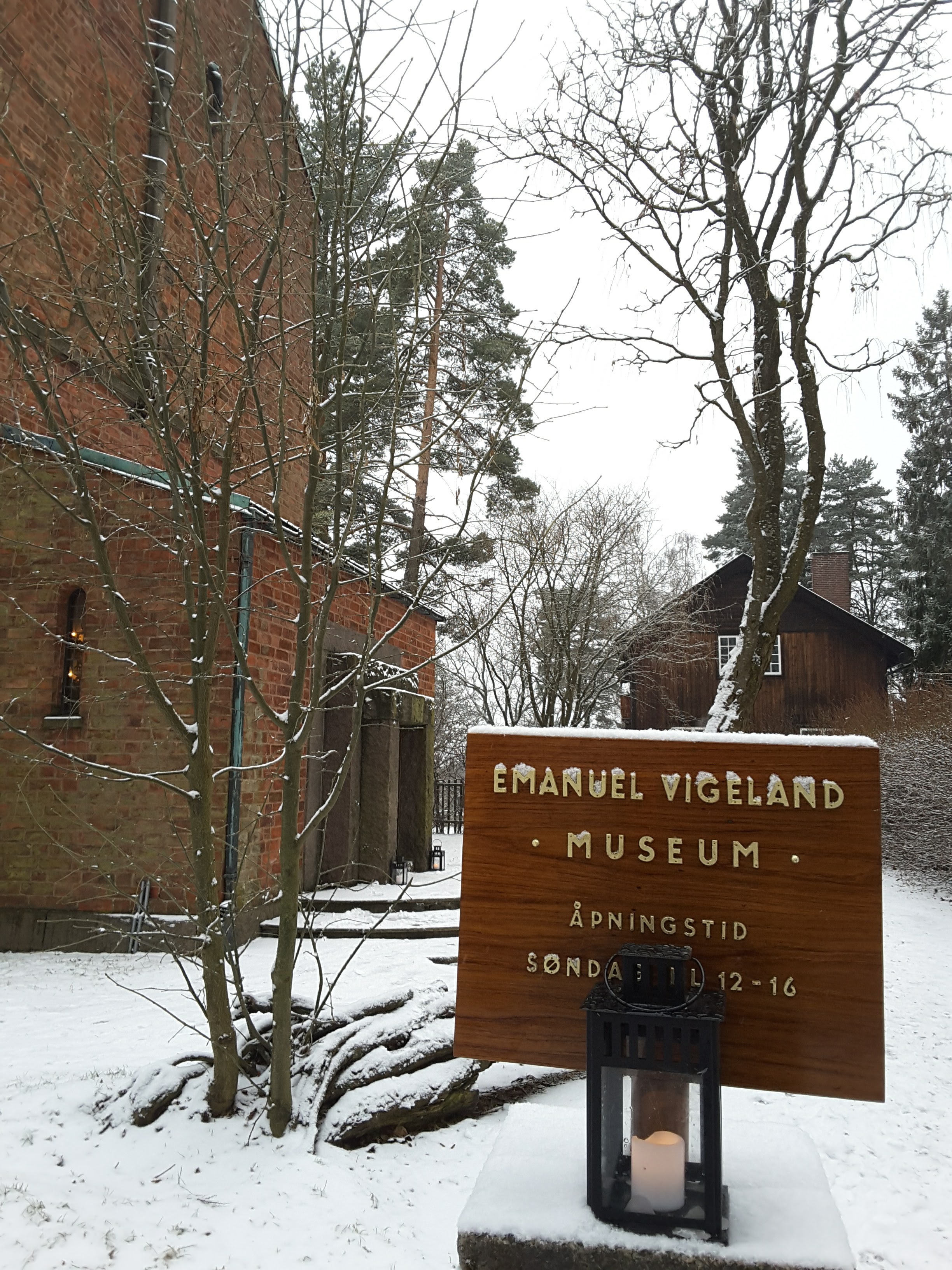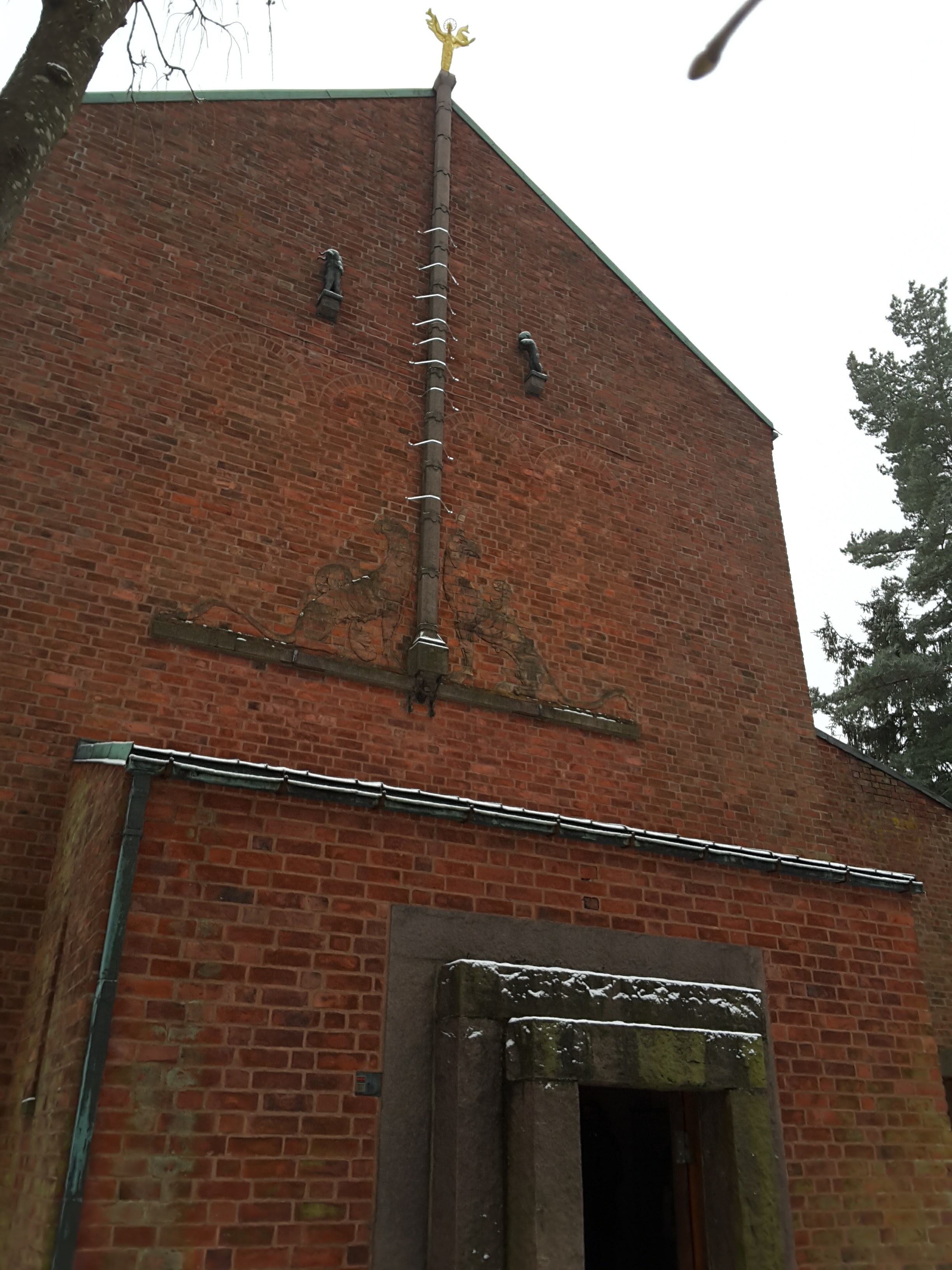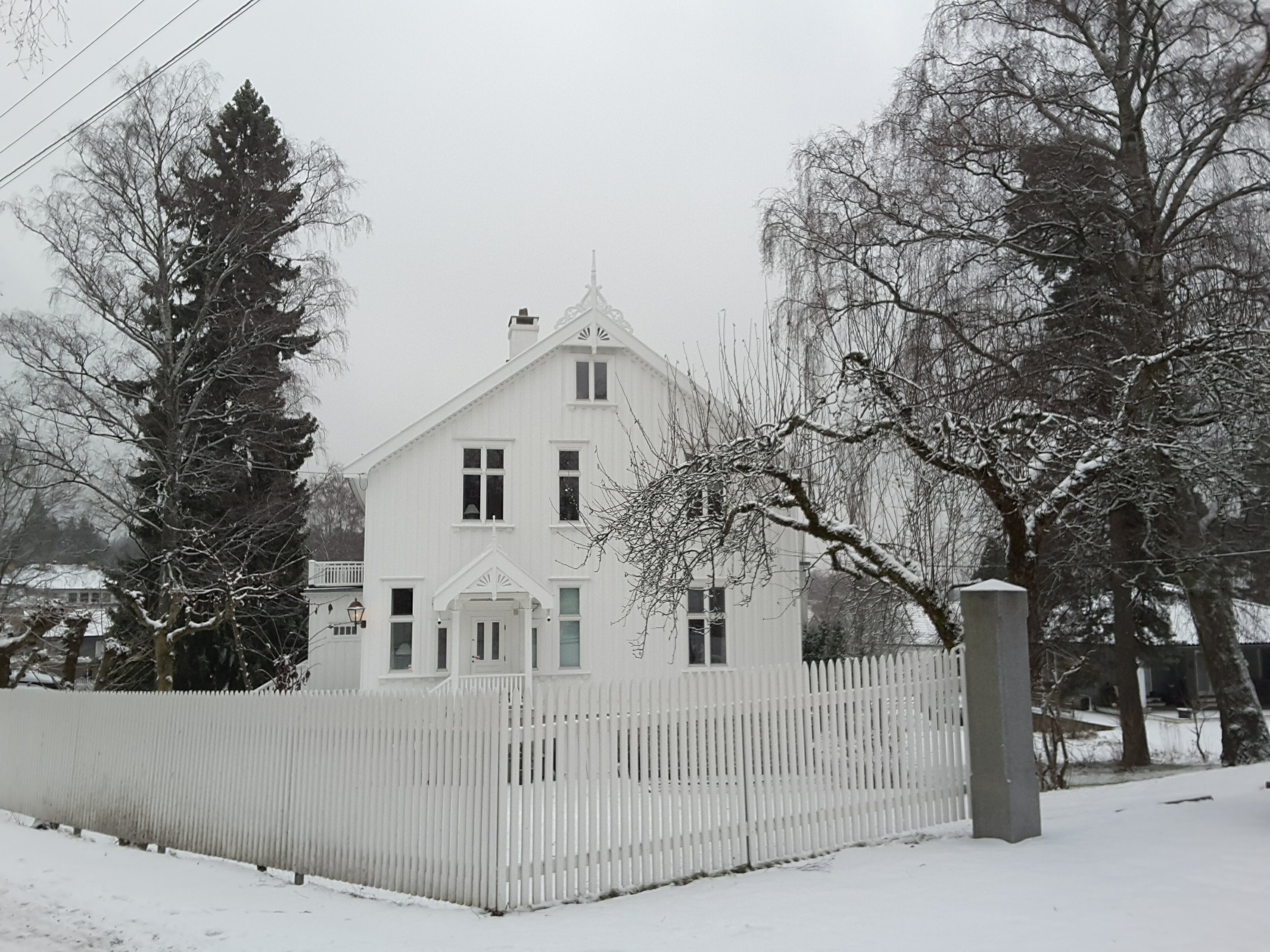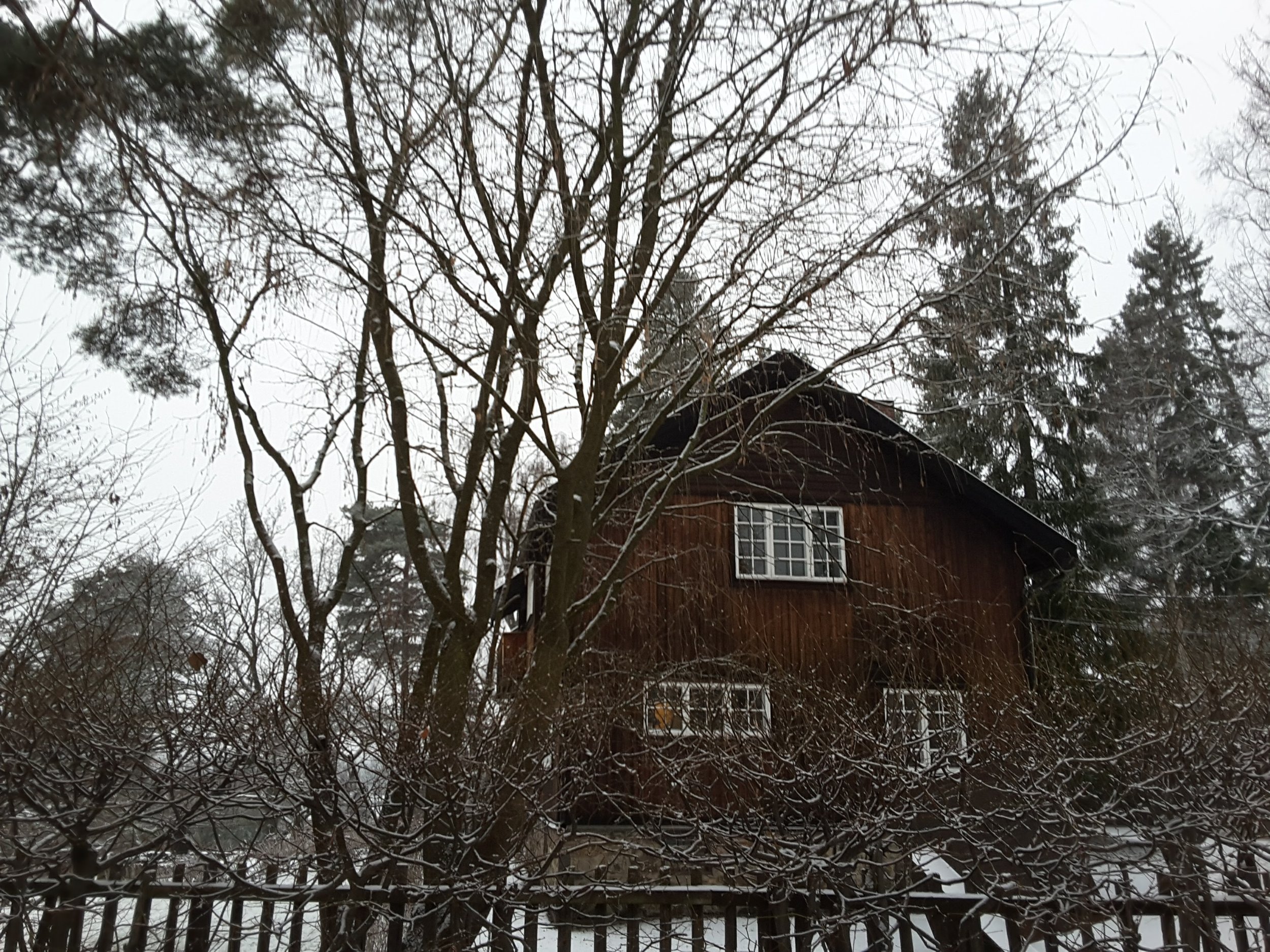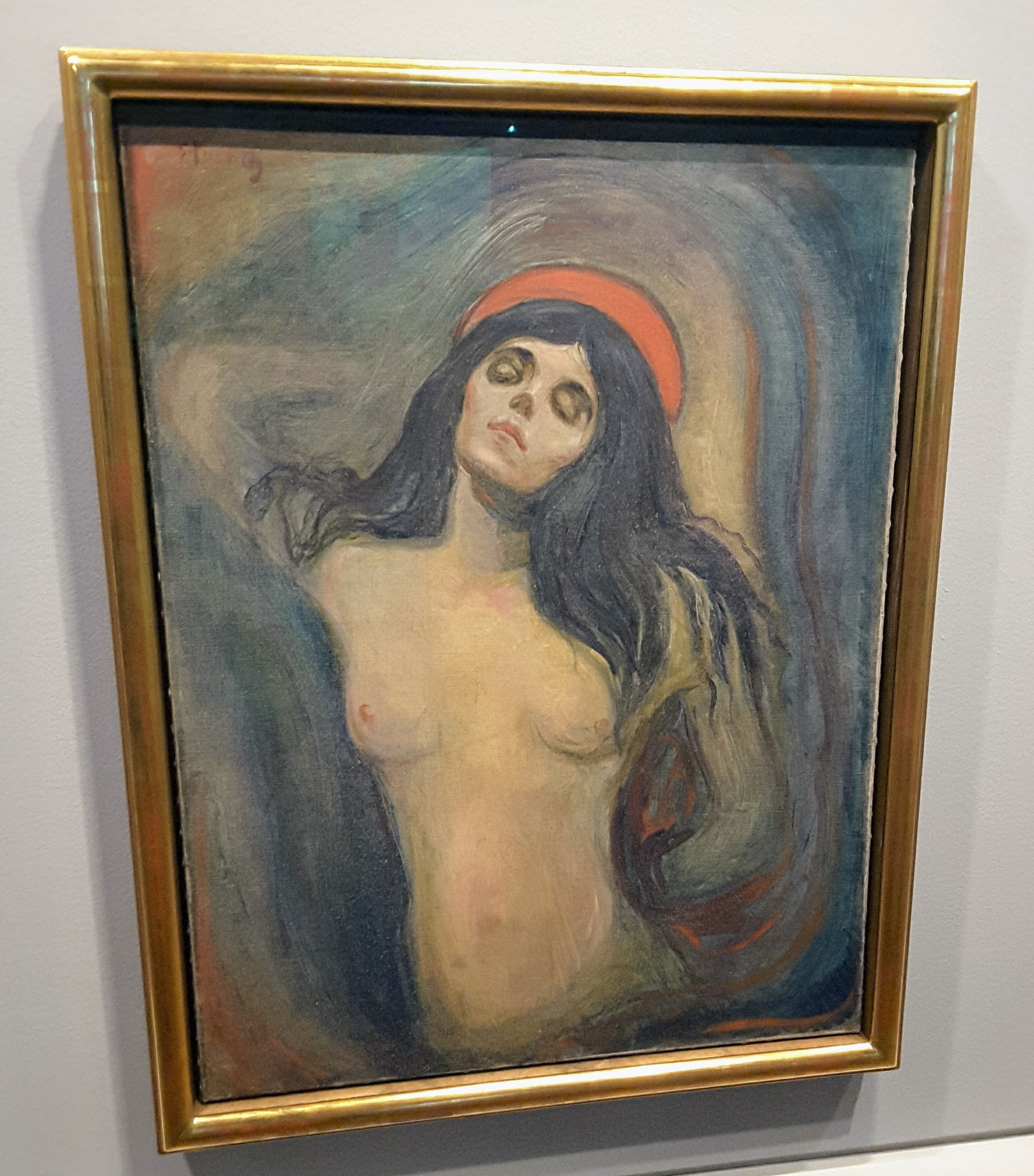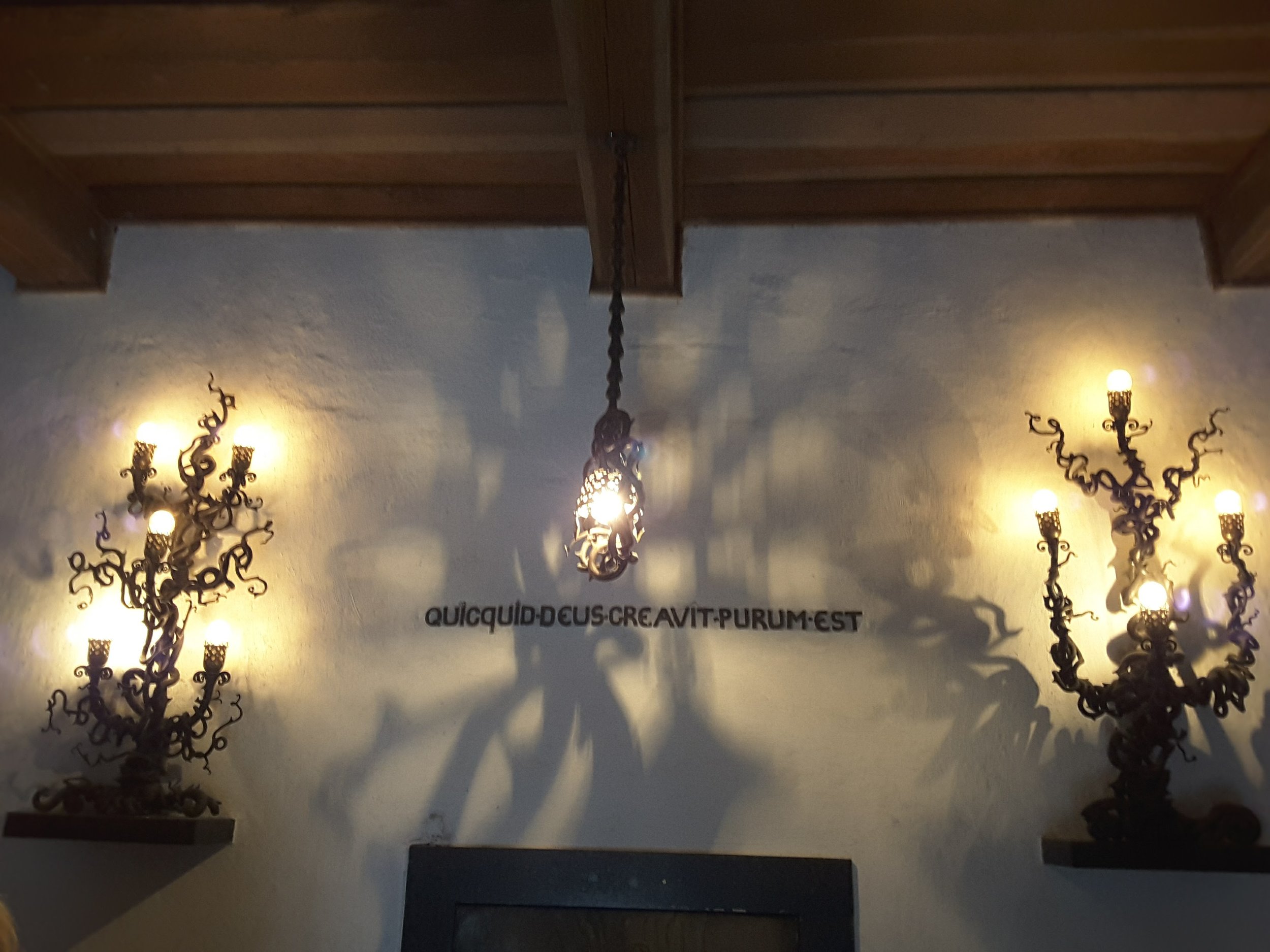Vita - a mythic mausoleum
A fresh snow lay thick on the ground as I got off the metro in a green suburb of Oslo. The train had been packed with people carrying skis and snowboards for a Sunday afternoon of winter sport. I was on a different trip, following my own esoteric trail and inner calling to the North that found me that morning hunting for the hidden mausoleum of Emanuel Vigeland, the artist brother of the more famous Gustav Vigeland, the Norwegian sculptor who created the powerful bronze sculptures in Oslo's Vigeland Park.
I was at a major turn in the wheel of my life. I'd landed in Oslo for a five day solo trip just as I was completing the sale of my home of 17 years in Seven Dials, Brighton after quitting a 15 year career as a Civil Servant. I'd spent the last eight of those years commuting to the heart of government in Whitehall, and was relieved to ditch the cattle truck trains in favour of a new job at my old alma mata, the University of Sussex. Strangely, I'd been staring at a famous painting of a seated naked woman by Munch in the Oslo Fine Art Museum when the call came through to tell me my flat had sold. In that moment I felt liberated and naked. I was letting go of the fabric of a building that had contained so much memory. Much joy but also much grief. Latterly the death of my baby and the death of my first long marriage. It was very much time to let go and embrace the new.
Oslo was the best place to do just that. A beautiful green lung of a city. A place where I feel very much at home. So much in fact, it led me to take a DNA test which revealed my Scandinavian ancestry and opened the lineage trail that took me back to the Norman Vikings. No wonder I had spent two hours with the Osberg ship burial finds on Museum Island. Now here I was treading softly through the snow in Slemdal, a quiet suburb of gracious Norwegian residential architecture. Large spacious homes hushed in the luminous light. Vigeland's mausoleum is a place that you have to deliberately seek out. It is not a place you happen upon by chance. My Airbnb hostess told me that few Norwegians even know about it. It's one of Oslo's hidden gems.
Emanuel Vigeland had originally designed the building not as a mausoleum but as a studio to house his paintings and sculptures. However, after completion in 1926 he decided that it should become his mausoleum. He spent the next twenty years or so painting the large, fantastical, erotic floor-to-ceiling murals on each of the walls. They beautifully and graphically depict birth, sex and death as a writhing mass of bodies all interconnected, in his interpretation of the wheel of life. Emanuel was already an established painter, sculptor and stained glass maker who worked on many of Norway's churches. It is not surprising then that his mausoleum has a very church like quality. He anticipated that many Christians might be somewhat shocked at its contents so he wrote on the walls: Quicquid Deus creavit purum est, (everything created by God is pure). Vigeland feared, understandably, that the public would be morally offended by the erotic scenes. "When you see a naked human body and are vexed at what you see," he has written on a drawing, "then reproach God for what he has created, if you dare.”
I found the red brick building looming starkly out of the snow at the end of a driveway between two large houses. The mausoleum is only open on Sundays and I'd made sure to get there at noon. To keep the wonder and mystery of the vault alive, the Museum limits the numbers going in, so whilst waiting I contemplated the scenes that lay behind the small, sculpted solid bronze door that makes you stoop to enter. Soon the heavy door swung open and we passed through into a large yet intimate chamber. As my eyes slowly adjusted to the dim light, I could start to make out the most incredible murals. All the ages of humankind are represented here, from fat cherub babies to skeletal old men. All naked. Writhing, dancing, fucking in orgiastic splendour, bodies moving from upper to lower worlds in a continuous cycle. A woman upside down with her legs spread as her consort buries his face deeply into her hidden delights that lie between. Another with her breasts suckled as a flash of ecstasy passes her lips. Transfixed by this heady scene, I moved slowly around the vault in an almost trance like state. Bronze sculptures loomed out at me in the corners, life size recreations of yet more explicit acts of procreation. Ecstasy caught in cold hard metal. I lost track of time but as visitors came and went, I must have spent over an hour sat in a meditation on Vita, the passions of human existence and what lies beyond the veil
I wanted to break into a song, as the acoustics in this chamber are incredible and otherworldly. Even whispers are amplified tenfold. Musicians come from all over the world to perform in this most intimate setting. I'd love to return and chant the runes and play my drum. The magic would be deeply felt in this strange hauntingly beautiful place. Above the door, set into an alcove is the egg shaped stone urn containing Emanuel’s ashes that have rested there since his death in 1948. He felt very present, very alive, his spirit fed by a continual stream of tourists, artists, and musicians all stooping to bow before him as we exited. He clearly had a great sense of morbid humour. I paid my respects before stepping back into the bright, snow light, almost blinding after the darkness of the mausoleum. Before heading back into the city, I bought a recording of Vita, a magical live performance of Norwegian folk songs by Unni Lovid. Every time I play it, I'm transported back to Oslo, back to that dark chamber. An old part of myself that lies deep in my bones, deep in my heart, wakes up and sings across the water to these ancestral lands. I know I will return.
“When thus my hour is nigh, my body weary and my mind dull, let me then face the sun and quietly pass away.
Fire so pure, receive my body so that, fully cleansed, it can meet God.
Lay these ashes, which once was a life for better or worse, in the ovary-shaped stone, in memory of my dear mother.
And underneath, on the golden base of the urn, shine the letters God."
Emmanuel Vigeland
